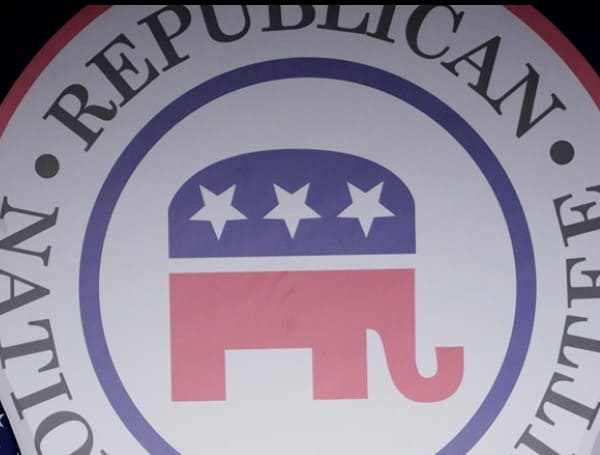Weighting Republican respondents more heavily than Democratic respondents in polls led to an overestimation of GOP support, which created the mirage of a “red wave” this midterm season, polling experts told the Daily Caller News Foundation.
In the House of Representatives, FiveThirtyEight, based on an aggregation of major polls, predicted a 228-seat GOP majority as the most likely outcome, while RealClearPolitics had projected at least 227 seats, with additions from 34 tossup races. In the Senate, FiveThirtyEight forecasted 51 seats for the GOP, with 52 and 53 seats being as likely, while RealClearPolitics forecasted 53 seats for Senate Republicans.
The results were significantly different from these projections. Though some races are yet to be called, Democrats retained control of the Senate, having won 50 seats as of writing, while Republicans, though projected to win the House, will have a narrow majority close to the 218 seats necessary for one.
“As for overestimating Republican participation, indeed, the GOP-friendly pollsters in the state and nationally certainly appeared to do that throughout the cycle,” said Paul Bentz, Vice President of HigherGround, a Democratic-affiliated elections strategy firm in Arizona, when asked about weighting.
In the news: Sen. Scott Loses Bid To Dump McConnell, But Some See A Moral Victory Against The Status Quo
Bentz pointed to the state’s gubernatorial race, which Democratic Secretary of State Katie Hobbs is projected to win and currently leads the vote count by 0.8 percentage points, but for which most polls until election day showed Republican candidate Kari Lake ahead by up to four points, per RealClearPolitics.
In the 2016 and 2020 presidential elections, former President Donald Trump significantly overperformed polling in several states that pegged him to lose, with his unexpected 2016 wins in Pennsylvania, Wisconsin, Michigan, Ohio, and North Carolina giving him an Electoral College majority to win. Though Trump lost the 2020 election, he still won states like Florida and Ohio and came close to winning races in Georgia, Arizona, and Pennsylvania, which polling firms had estimated would be easily won by Joe Biden.
In all, in 2020, polls underestimated the presidential popular vote, swing-state vote, Democratic House majority and the Democratic Senate majority. The American Academy of Public Opinion Research (AAPOR) called it the “worst performance for polls since 1980.”
Following these two elections, polling companies were accused of inaccurate polling methodologies by undercounting Republican-leaning voters, whose Election Day turnout often produced different results. “There’s no question that the polling errors in [20]16 and [20]20 worry the polling profession, worry me as a pollster,” said Charles Franklin, the director of the Marquette Law School Poll, in comments to Politico.
Most pollsters believe that Republican voters, particularly Trump-supporting voters, are less likely than Democrats to disclose who they support due to the perceived social stigma of supporting conservative candidates and causes, particularly in urban and suburban areas largely inhabited by progressive Democrats. Their reluctance to respond yet willingness to vote creates a disparity in results, which experts have termed a problem of “non-response bias” by GOP voters or, more precisely, a “shy Tory” or “shy Trump” phenomenon.
To account for it, some pollsters have defaulted to the practice of “weighting,” a common statistical tool to remove survey inaccuracies whereby some responses are given more value in the final assessment of results. Pollsters use the average level of turnout among certain group voters over immediate past election cycles to calculate the disparity, and proportionately adjust response rates based on turnout rates, according to the AAPOR.
The practice of “weighting” for more non-college-educated voters, who are more likely to vote for Republicans, had been recommended by the AAPOR in a report on the 2016 election, writing “that people with more formal education are significantly more likely to participate in surveys than those with less education.” Weights had been applied by pollsters to the aggregate of GOP respondents leading up to the elections.
“We knew from 2016, 2018 and even 2020 that Trump voters tended not to respond to pollsters because they thought that the results would be used against them,” said Frank Luntz, a political strategist in comments to The Hill. He added that “past errors caused pollsters to overindex Republicans.”
However, experts speaking to the DCNF believe that the excessive weighting of Republican responses boosted the apparent strength of GOP candidates in the polls, rather than merely accounting for nonresponse bias. This led to some GOP candidates receiving sizeable polling leads despite eventually losing.
“I strongly suspect that Democrats and non-Trump Republicans were under-sampled,” said GOP elections strategist William Francis Buckley O’Reilly, who worked on Republican Rep.-elect Mike Lawler’s campaign in New York, in comments to the DCNF. He added that “turnout was higher than expected in many races. That alone can skew the polling.”
Apart from Lake’s loss, GOP candidate Blake Masters lost to Democratic Sen. Mark Kelly of Arizona by 4.9 points, despite final polls showing Masters ahead by 1 point. In Pennsylvania, Republican candidate Mehmet Oz lost to Democratic Lt. Gov. John Fetterman by 4.5 points, even as most final polls showed Oz winning by two or three points.
Not all agree that the polls were inaccurate. “Some of the polls that contributed to the ‘red wave’ theory, were not done by traditional pollsters,” Dr. Don Levy, director of the Sienna College Research Institute told the DCNF. He was joined by Stephen Ansolabehere, a Harvard professor and member of the MIT Elections Lab, who said that “It does not look like the polls (collectively) were far off from the Senate and governor outcomes, and that “most outcomes were within the margin of error of most polls.”
However, “it will take time to measure the accuracy of the polls,” said Ansolabehere.
Visit Tampafp.com for Politics, Sports, and National Headlines. Support journalism by clicking here to our GiveSendGo or sign up for our free newsletter by clicking here.
Android Users, Click Here To Download The Free Press App And Never Miss A Story. Follow Us On Facebook Here Or Twitter Here.

